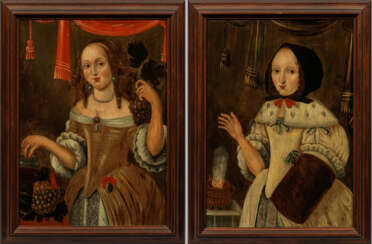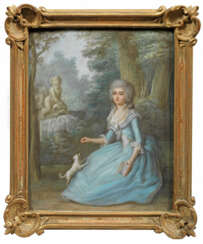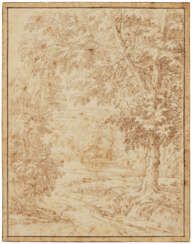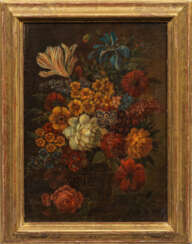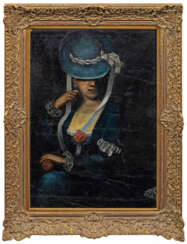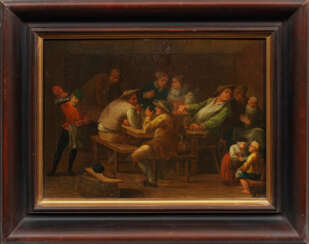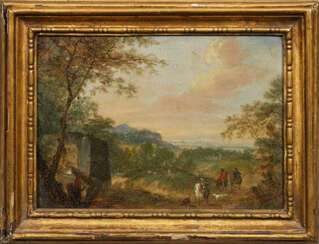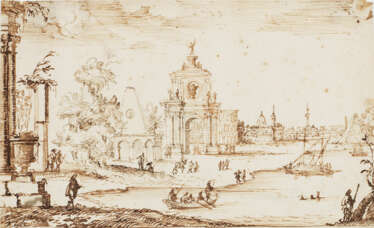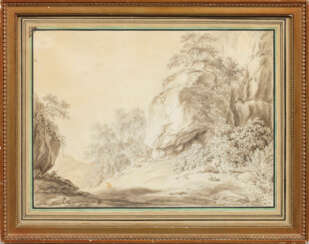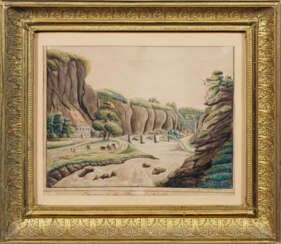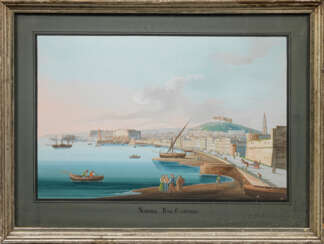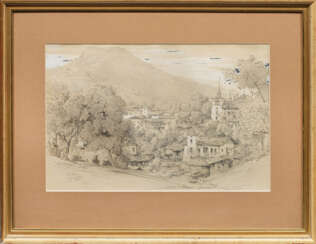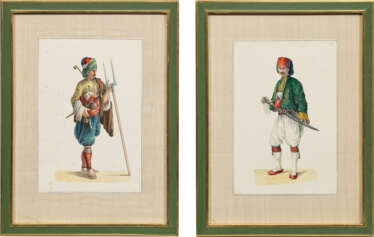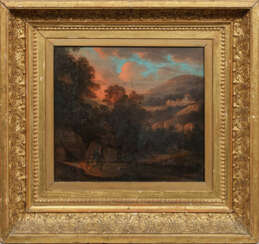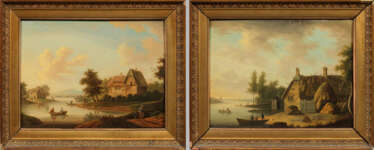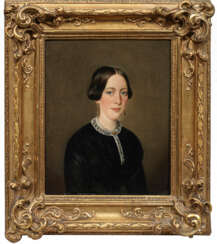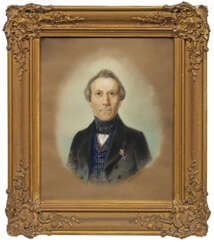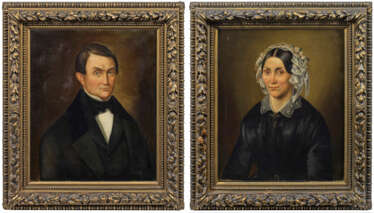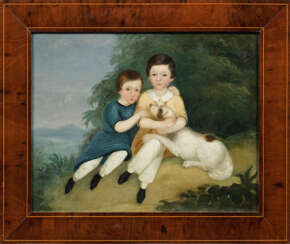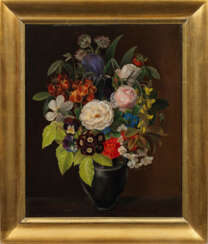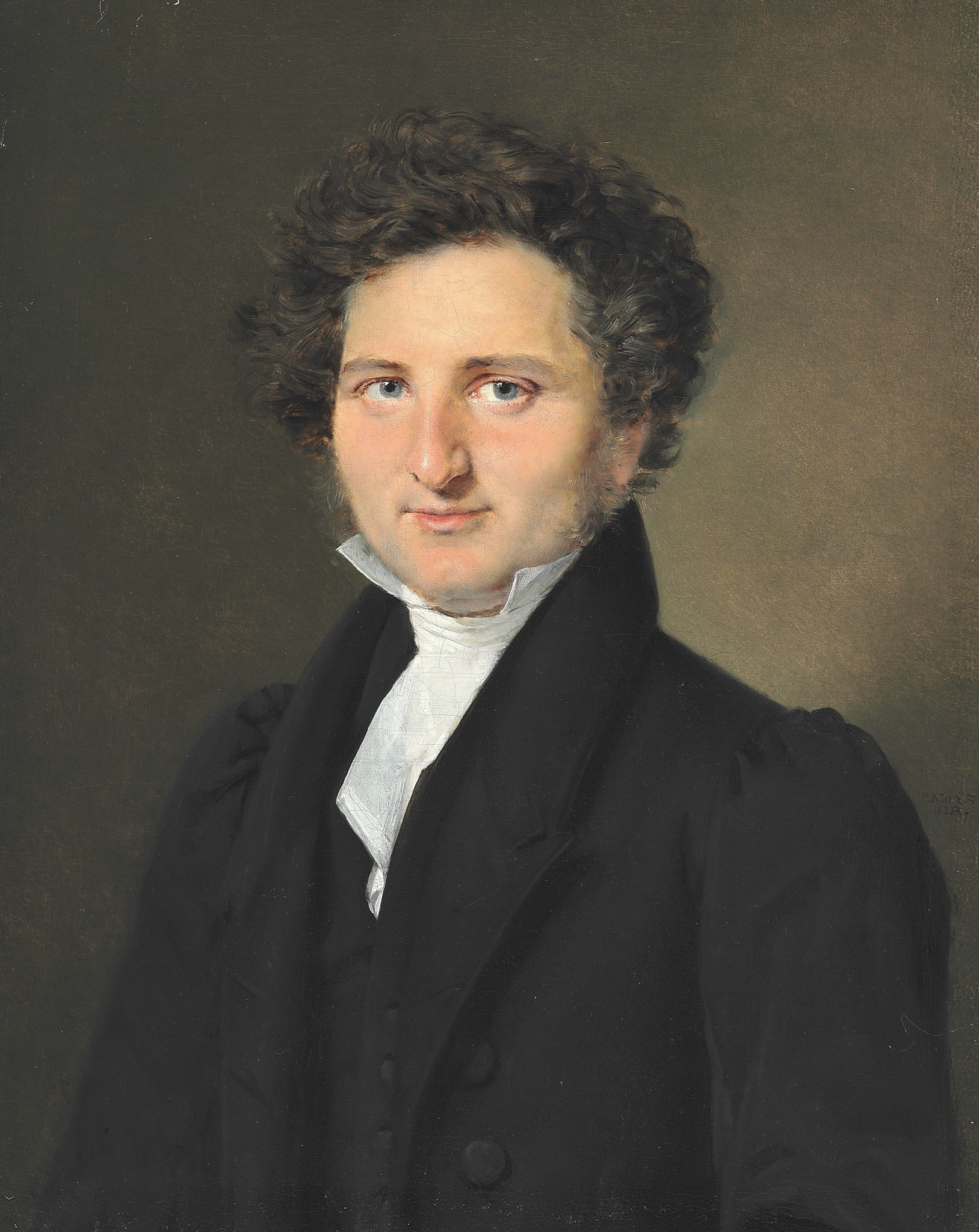
Paintings — A 187: International art & antiques - IV
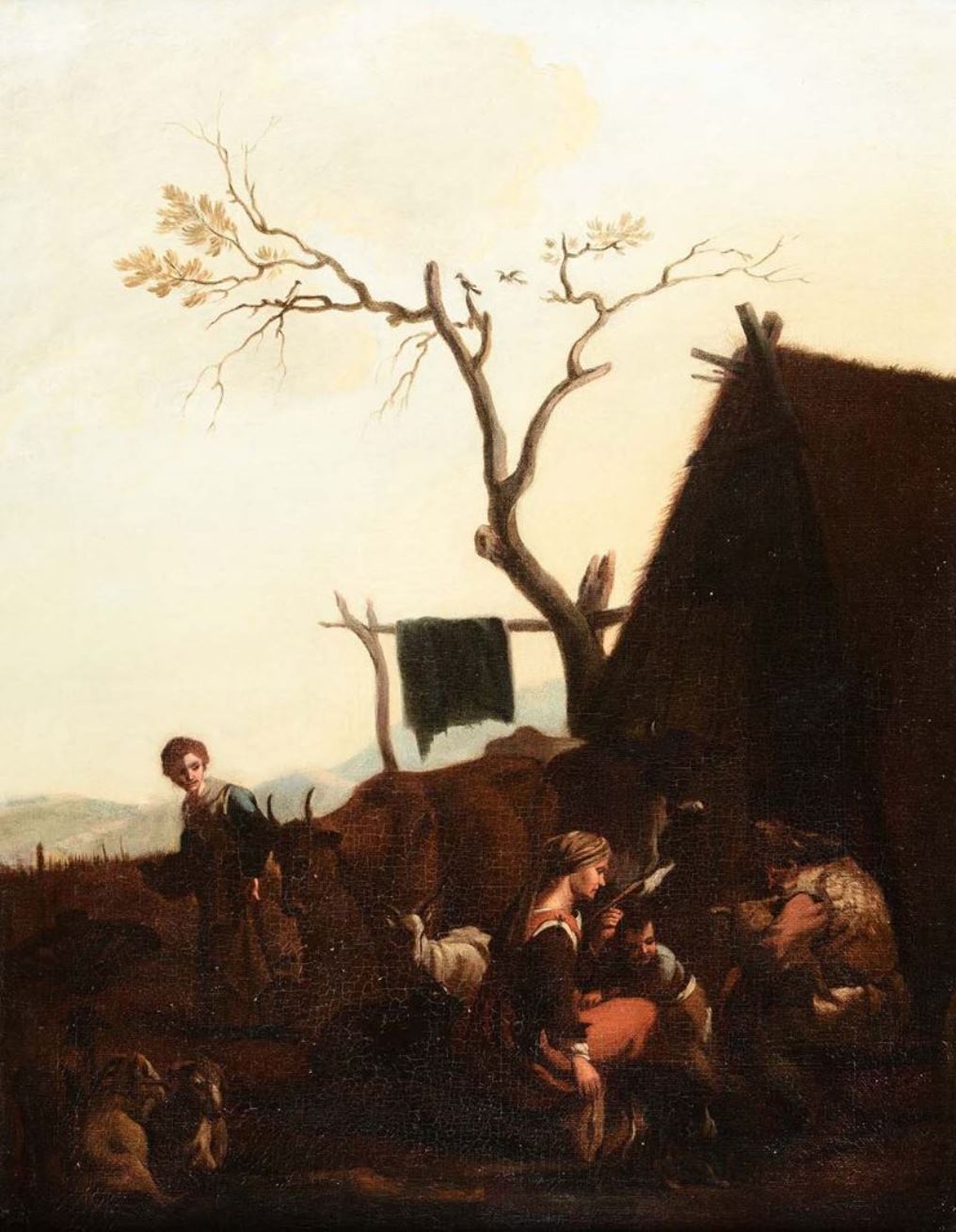
Michelangelo Cerquozzi or Michelangelo delle Battaglie or Michelangelo delle Bambocciate was an Italian Baroque painter and member of the Accademia di San Luca in Rome.
The artist was a master of battle scenes and also painted in the Bambocciate style, hence his middle names. Cerquozzi , like many other painters of the time, was influenced by Caravaggio.

Michelangelo Cerquozzi or Michelangelo delle Battaglie or Michelangelo delle Bambocciate was an Italian Baroque painter and member of the Accademia di San Luca in Rome.
The artist was a master of battle scenes and also painted in the Bambocciate style, hence his middle names. Cerquozzi , like many other painters of the time, was influenced by Caravaggio.
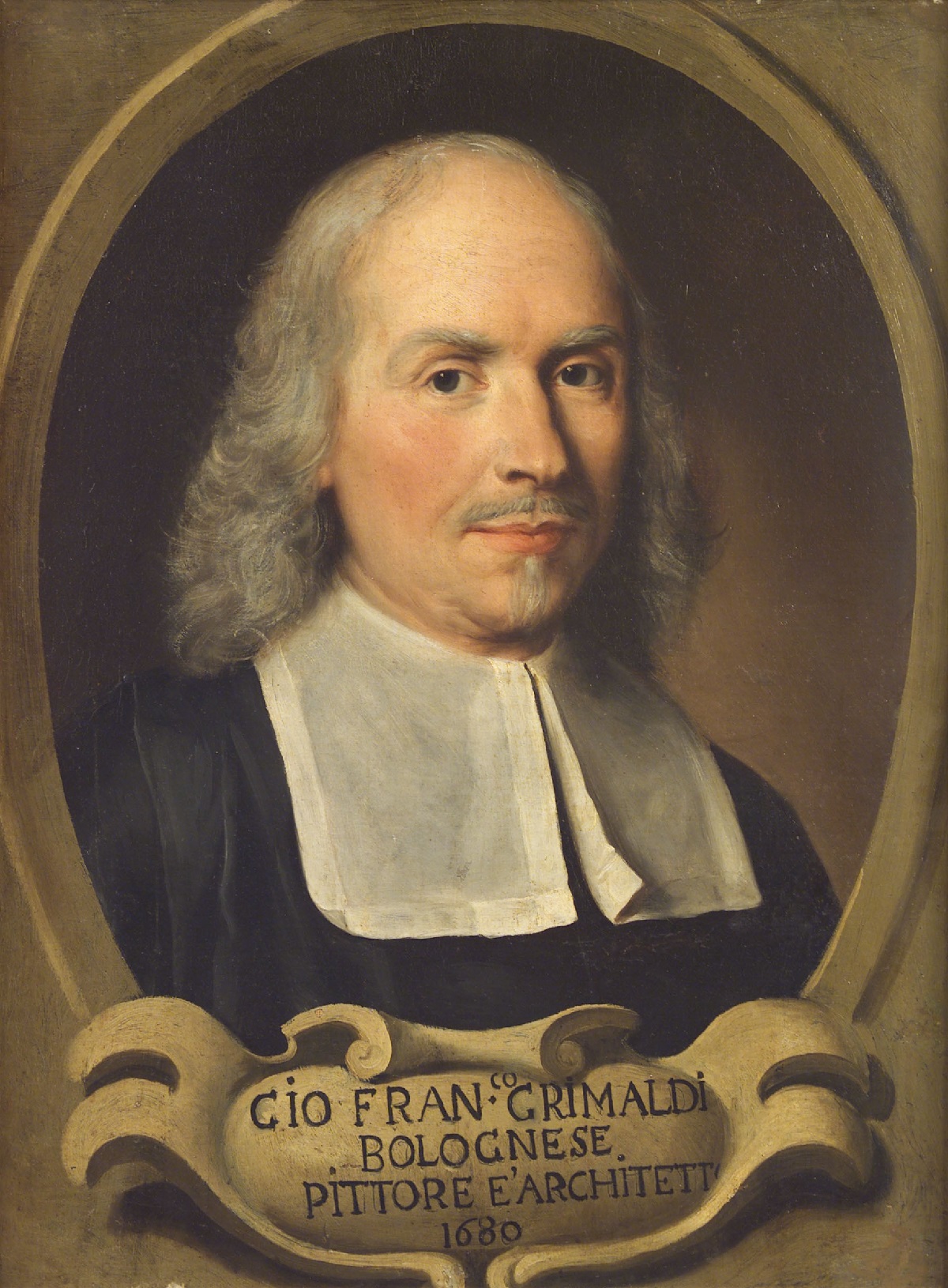
Giovanni Francesco Grimaldi was an Italian painter, draughtsman, printmaker and architect. He was an accomplished fresco painter of classical landscapes which were popular with leading Roman families.
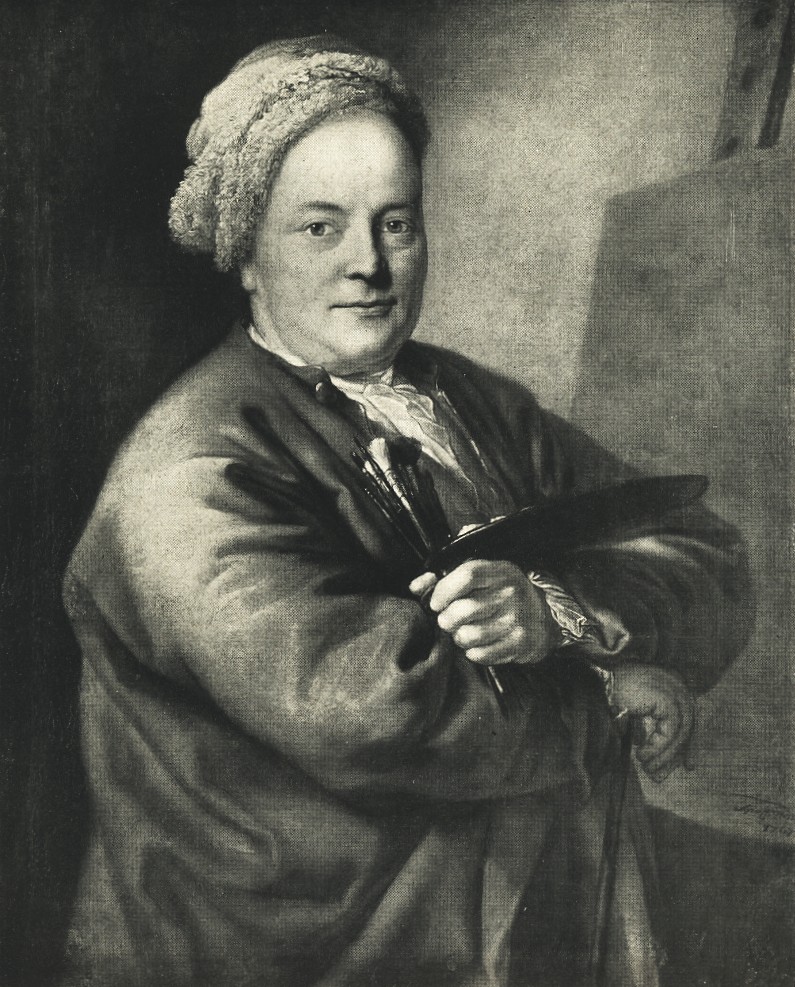
Christian Wilhelm Ernst Dietrich, also known as Christian Guillaume Ernest Dietricy, was a German painter and printmaker.
He was born in Weimar, Thuringia, into the family of the court painter Johann Georg Dietrich, and received his first training from his father. Dietrich worked in a variety of techniques and artistic movements of his time.
The talented artist took up any subjects: stories from the Old and New Testament, allegory and mythology, as well as portraits, genre scenes, portrayed ordinary people and livestock, painted coats of arms and vignettes, and more.
In 1764, Dietrich was appointed director of the painting school of the Meissen porcelain manufactory. The following year he became a professor at the Dresden Academy of Fine Arts. Works of Christian Wilhelm Dietrich can be found in many museums in Europe.
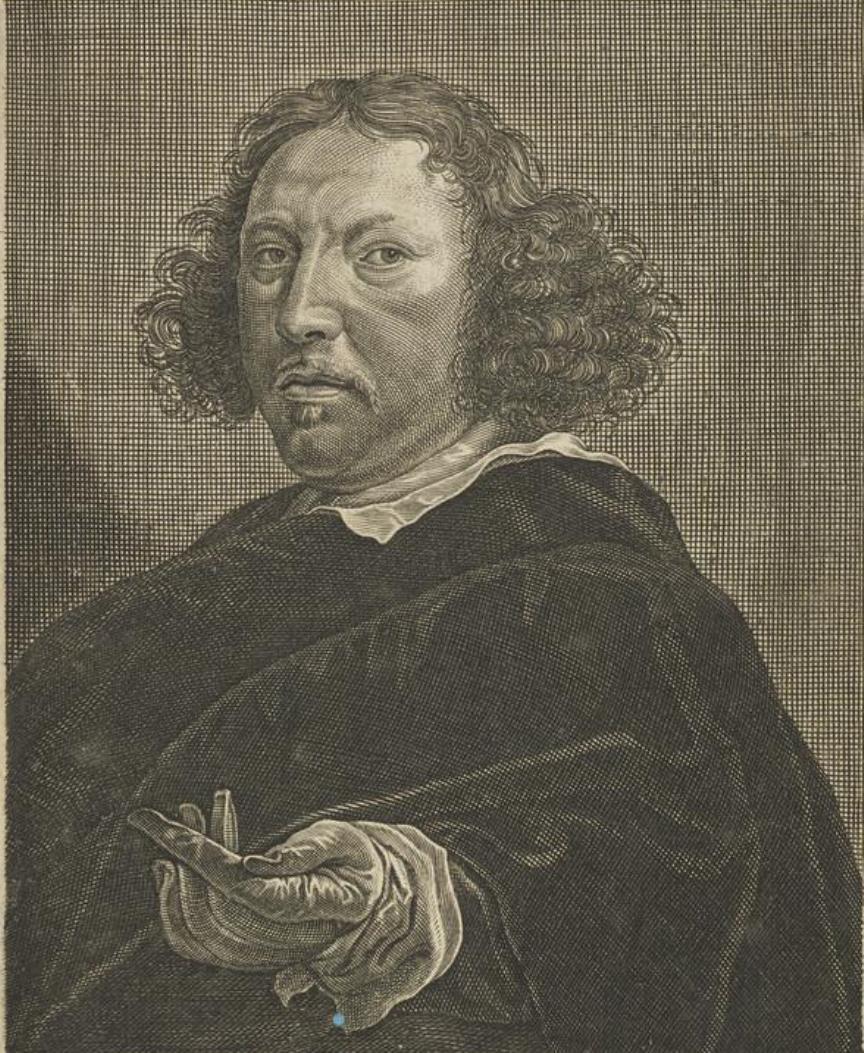
Herman Saftleven the Younger was a Dutch artist of the Golden Age who was Dean of the Guild of St. Luke in Utrecht.
Herman Saftleven the Younger was born into a creative family. His father, Hermann Saftleven the Elder (c. 1580-1627), was the father of three artist sons, Hermann the Younger, Cornelis (1607-1681), and Abraham Saftleven (c. 1611/13 - 1646).
Saftleven the Younger was an extremely productive painter, draughtsman, and printmaker. He is known for his landscapes near rivers as well as scenes of people traveling in the woods.
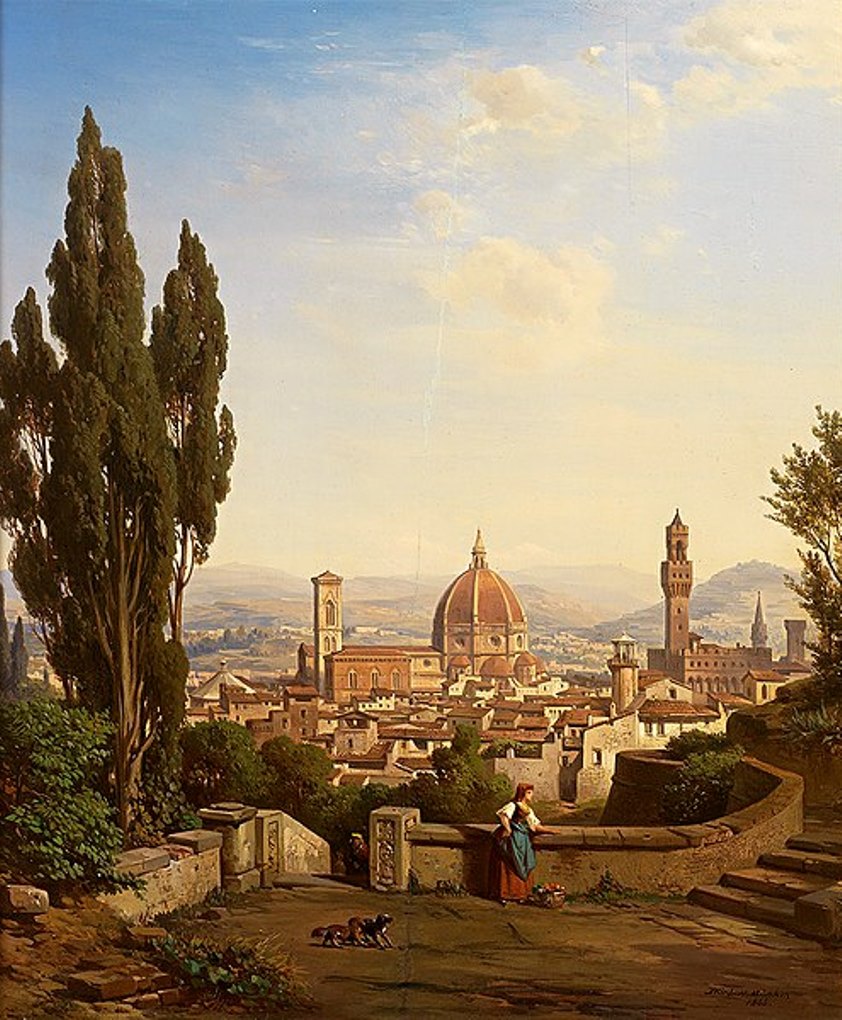
Albert Emil Kirchner was a German painter and draftsman known for his depictions of architectural structures and a member of the Munich Academy of Art.
He made drawings for the collection "Medieval Monuments of Architecture." In the mid-19th century, Kirchner was commissioned by the Bavarian Eastern Railway to produce a series of watercolors of towns along that road. These drawings are still used today as an important source of railroad history.
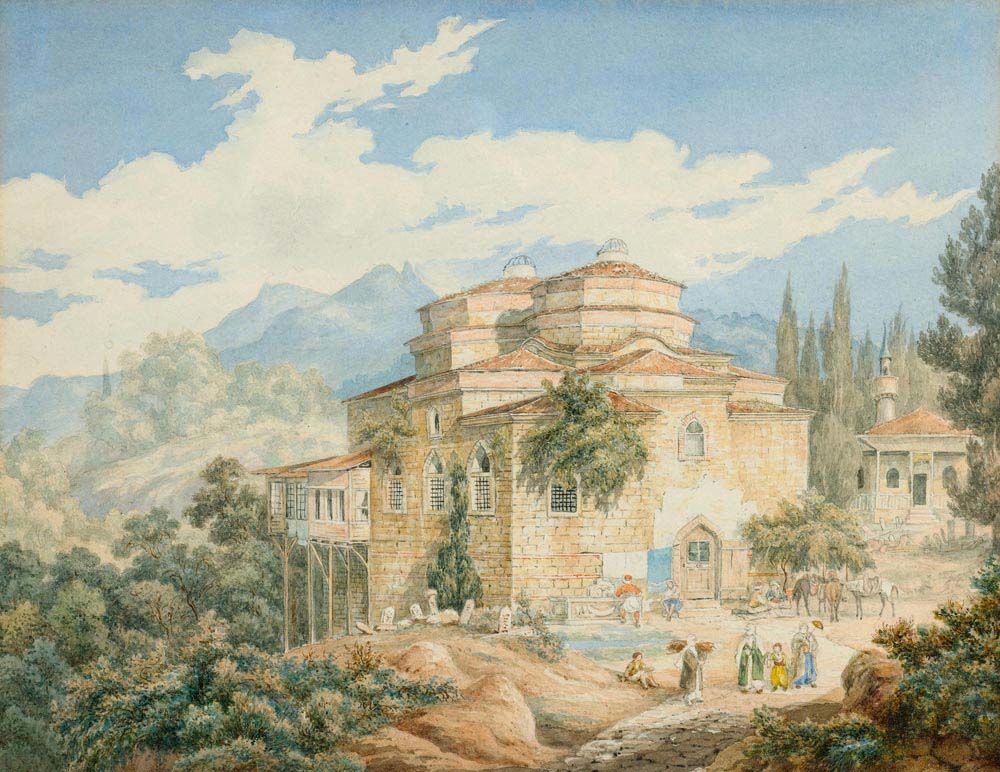
Johann Jakob Falkeisen was a Swiss landscape painter and engraver.
He studied fine art in Paris and Milan. On the business of the family silk mill, Falkeisen visited Turkey and Italy and painted watercolor landscapes and views - palaces and villages, mountain lakes and ships on the shore, as well as making domestic sketches.
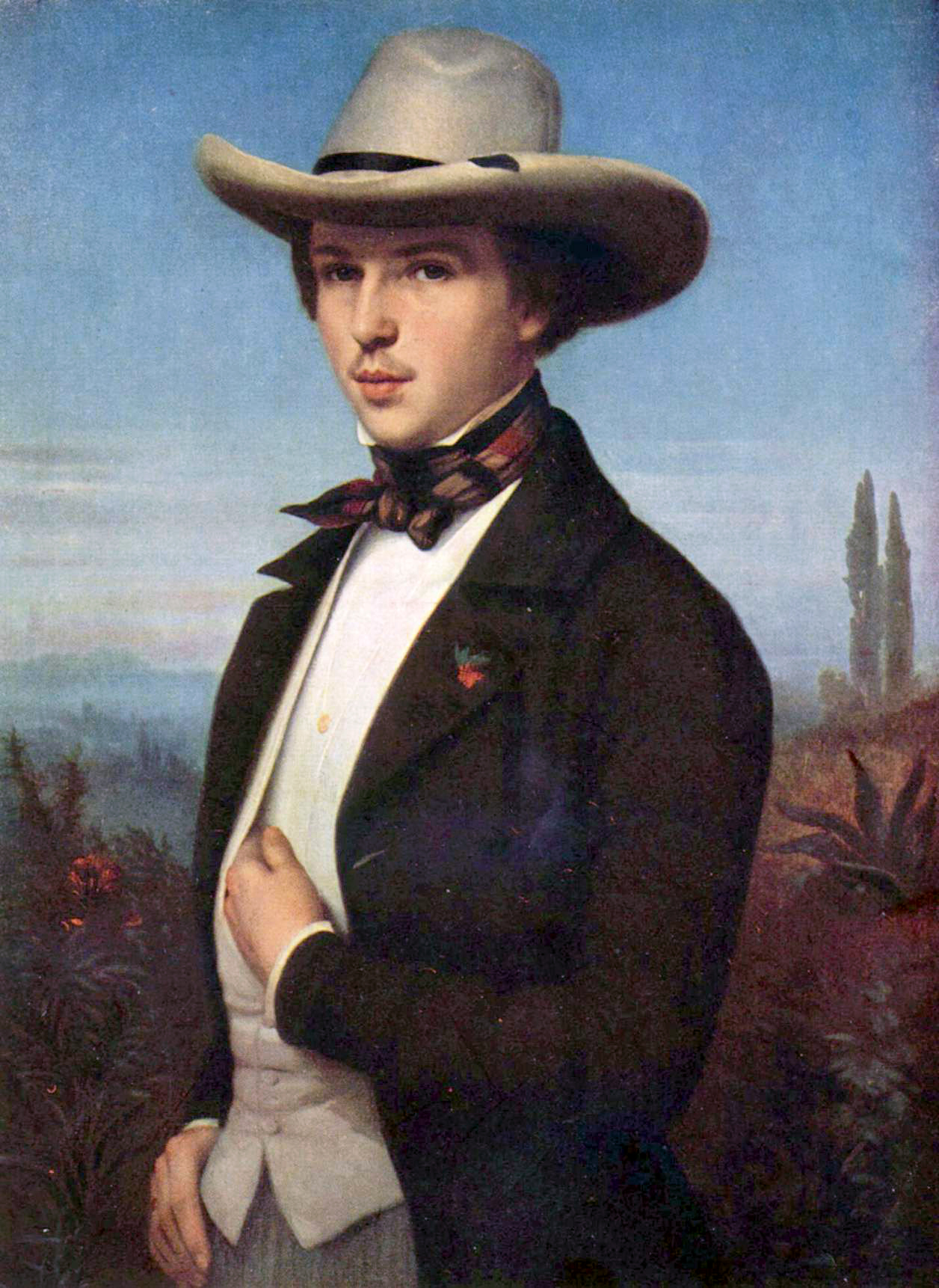
Oswald Achenbach was a German painter associated with the Düsseldorf school of painting. Though little known today, during his lifetime he was counted among the most important landscape painters of Europe. Through his teaching activities, he influenced the Kunstakademie Düsseldorf. His brother, Andreas Achenbach, who was twelve years older, was also among the most important German landscape painters of the 19th century. The two brothers were humorously called "the A and O of Landscapes" (a reference to their initials matching a common German reference to the Alpha and Omega).
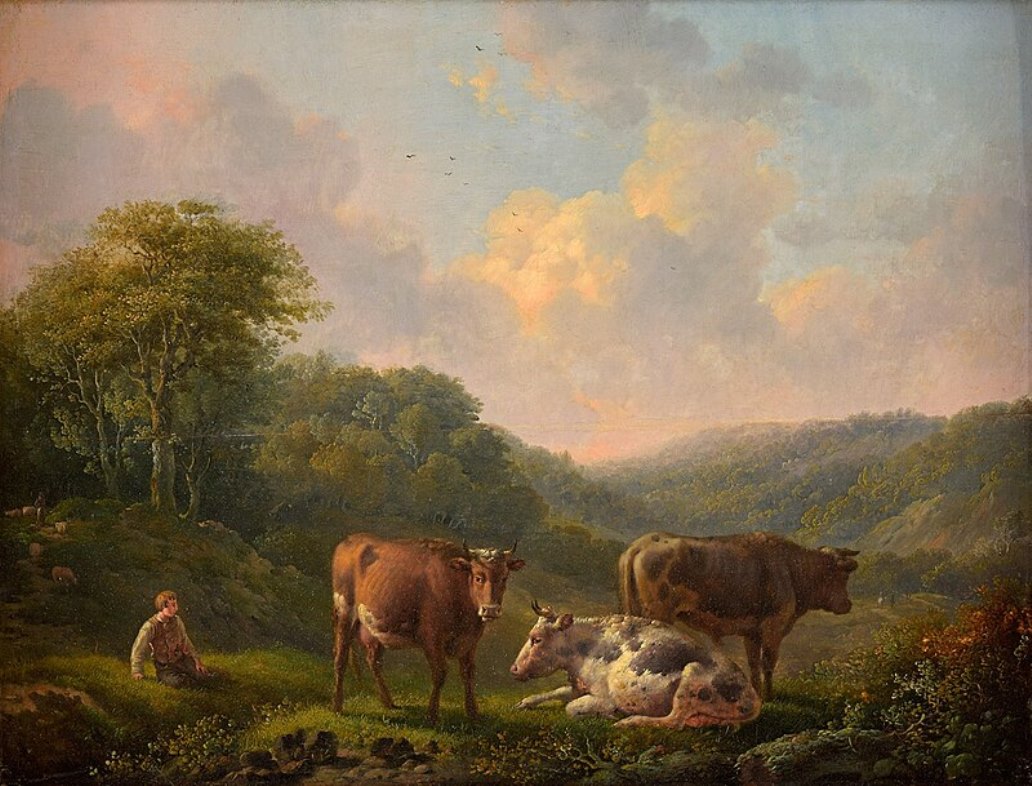
Adolf Karel Maximiliaan Engel was a Belgian landscape painter who came from an old Swedish family.
Engel was a master of rustic scenes and created beautiful natural landscapes with cows and pastorals. His most famous painting is Landscape with Cattle.
Adolphe Engel left behind a large collection of materials for the study of the scenic regions of Belgium. Unfortunately, the life of this talented artist did not last long. He fell into depression and committed suicide at a very young age.
Most of Adolphe Engel's works are in private collections.
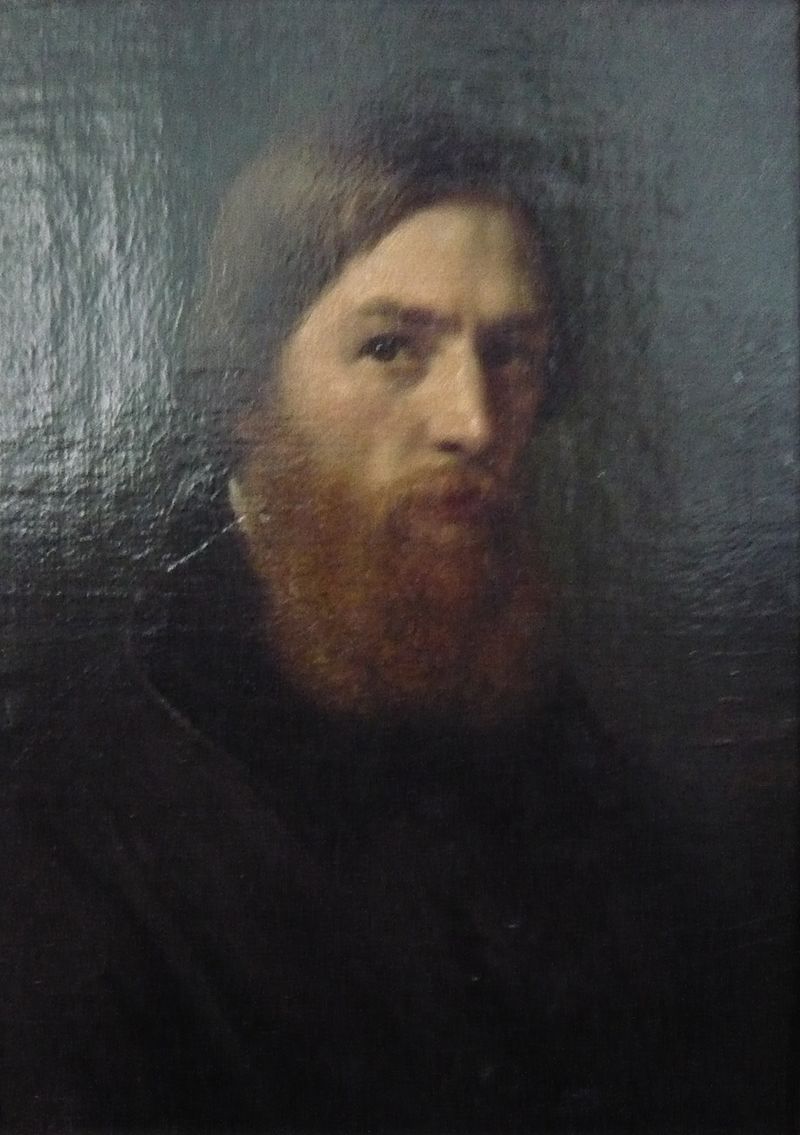
August Weber was a German landscape painter and lithographer of the Düsseldorf school of painting.
In the mid-19th century he became a member of the Malkasten association of progressive artists (Paintbox).
In addition to landscape painting, August Weber also created watercolors and lithographs.
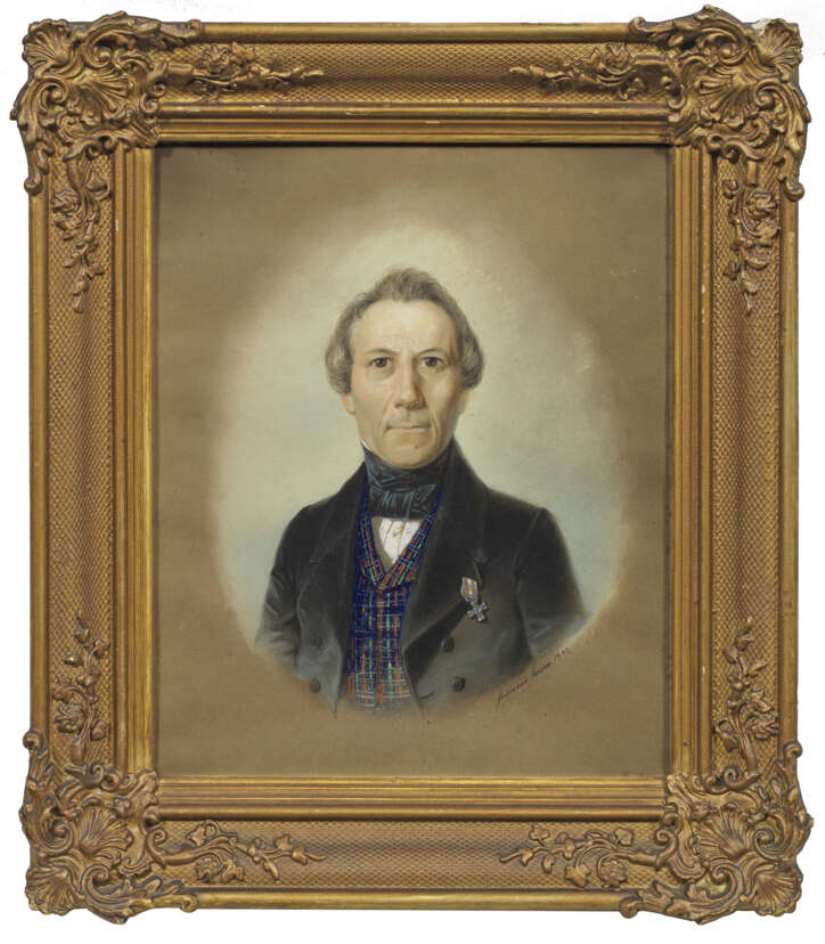
Ferdinand Maron was a German portrait painter, landscape painter and genre painter.
He participated in exhibitions of the Berlin Academy and worked in Paris. His famous portrait of the Polish noblewoman Zofia Branicka (Countess Zofia Potocki) by Maron is in the National Museum in Warsaw.




